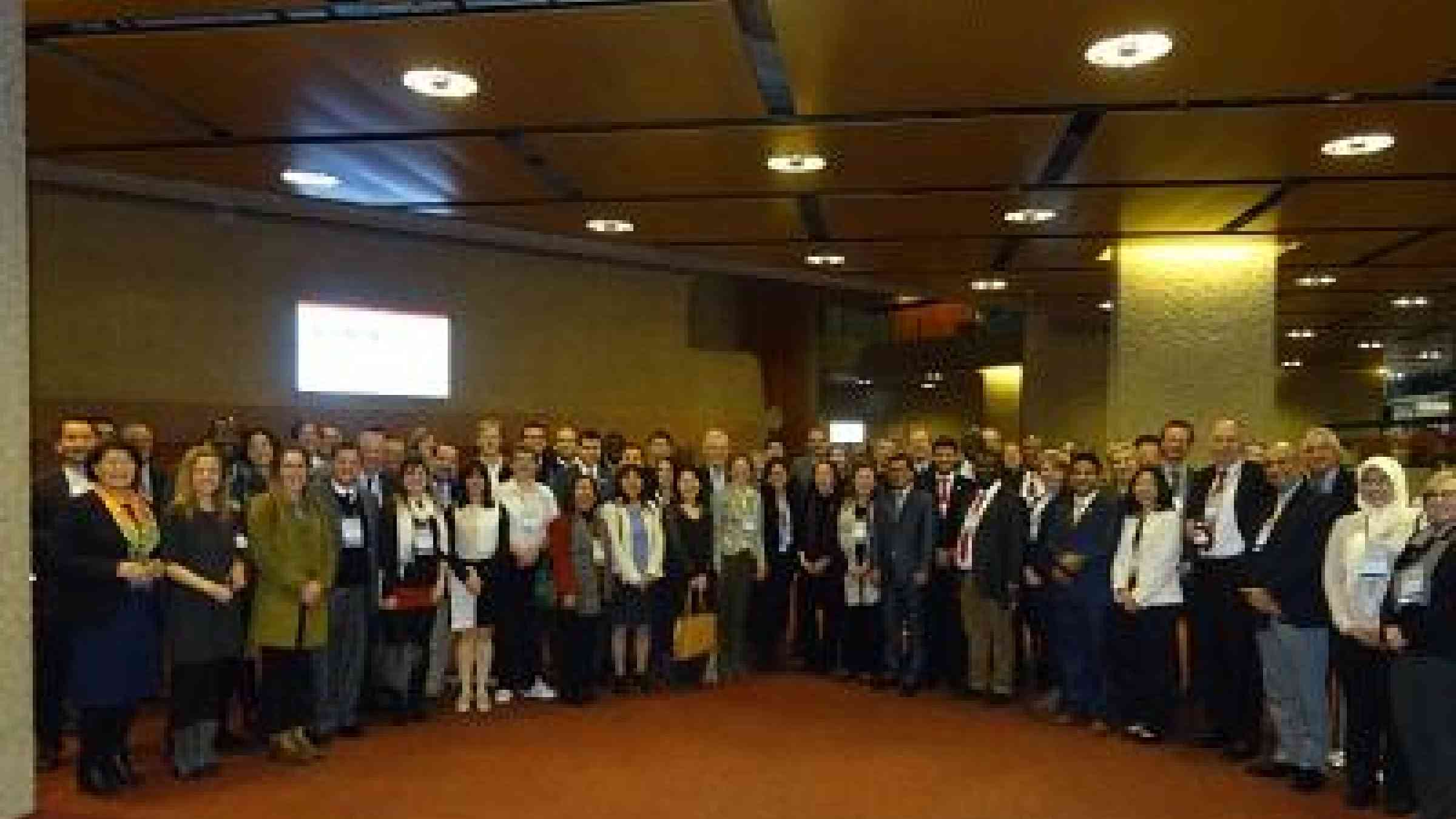Please help us improve PreventionWeb by taking this brief survey. Your input will allow us to better serve the needs of the DRR community.
Capacity development strategy for Sendai Framework

Group photo taken today at the close of the two day experts consultation on a Global Capacity Development Strategy to support implementation of the Sendai Framework
GENEVA, 15 March 2018 - Over 100 experts today agreed on the key elements of a Global Capacity Development Strategy to implement the Sendai Framework for Disaster Risk Reduction, the global plan to reduce disaster losses adopted in March 2015.
This follows the launch two weeks ago of the Sendai Framework Monitor, an online tool for UN Member States to report on their yearly disaster losses and measures they are taking to reduce disaster risk. To date, 148 countries have appointed focal points to coordinate reporting.
The Global Capacity Development Stratgy will now go to a second round of regional consultations and be available on line https://www.preventionweb.net/files/56922_sfdrrcdstrategyzerodraft20180223.pdf till 31 March 2017 for more comments before being finalized and presented at the next Global Platform for Disaster Risk Reduction in May 2019 in Geneva.
Welcoming the strategy, Prof. Wadid Erian, of the League of Arab States, said: “This was a very successful meeting. The zero draft of the Capacity Development Strategy was a very good basis for the work. We will be able to make good use of it in the League of Arab States. It also established a good basis for our work with the STAG (UNISDR Scientific and Technical Advisory Group) and we can build something very concrete in our activities.”
The strategy also got a positive review from Ms. Sayanaa Lkhagvasuren, Chief Adviser and Chief of Staff to the Deputy Prime Minister of Mongolia, the country which hosts the next Asian Ministerial Conference for Disaster Risk Reduction in July.
Ms. Lkhagvasuren said: “This strategy is going to be instrumental for many Member States who have established National Platforms for Disaster Risk Reduction to use as guidelines for national and local actions and to mobilise stakeholders across sectors in an inclusive and participatory approach.”
“Technical capacity building is very much needed and urgent in Nepal at the grassroots level, said Narayan Pradad Sharma Duwadee from the Ministry of Foreign Affairs who attended the consultation meeting in Geneva “as people easily forget about disasters and I hope we can get more training at the local level.”
“Capacity building is an issue in Ghana where not enough people are trained in disaster risk reduction," added Eric Nana Agyemang from The National Disaster Management Organization (NADMO). "Education in disaster risk reduction should start at the early age from school and then at the workplace as well. We need to have professional trainers on disaster risk reduction to train us first,” Mr. Nana said.
The two-day Geneva consultation also discussed the establishment of a “Disaster Risk Reduction Capacity Building Marketplace” where Member States, organizations and other stakeholders will make known their capacity building needs, and choose between different capacity building service providers.
“The 95-page document is an important tool and guide to support governments in the implementation of the Sendai Framework and in particular to achieve Target (e) which aims at increasing the number of countries with national and local disaster risk reduction strategies by 2020”, said Sanjaya Bhatia, Head of UNISDR’s Incheon Office and Global Education and Training Institute for Disaster Risk Reduction in Korea.
“Consultations have been very fruitful and have demonstrated the clear need for more coherence and coordination between the different existing programmes in capacity development in disaster risk reduction. The document reflects the two-day group discussions and highlights potential partnerships that will be crucial to support countries in the Sendai Framework monitoring process and their achievement of the seven targets and four priorities for action of the Sendai Framework,” Mr. Bhatia added.
Participants in the Geneva meeting included representatives of Member States, Inter-Governmental Organizations involved in capacity development for disaster risk reduction, UN agencies, the Capacity Development for Disaster Reduction Initiative (CADRI), science and technology groups, academia, private sector and other stakeholder groups who reviewed a zero draft developed after a first round of consultations with Member States after the last Global Platform for Disaster Risk Reduction in Cancun, Mexico.
UNISDR Director, Kirsi Madi, opened the meeting yesterday and empahasized that capacity building has never been so important.
“Between 2005 and 2015, disasters cost more than US$ 1,4 trillion and pushed millions of people into poverty. We want to ensure that capacity development programmes in disaster risk reduction lead to reduce disaster losses and strengthen resilience,” she said.
Member States have identified the need for technical support in building the capacity of institutions to implement the Sendai Framework at the national and local level and tasked the UN Office for Disaster Risk Reduction to bring coherence to the capacity development services provided by a variety of actors, including United Nations agencies, non-governmental organizations, state-led and private sector stakeholders.
Explore further
Also featured on
Please note: Content is displayed as last posted by a PreventionWeb community member or editor. The views expressed therein are not necessarily those of UNDRR, PreventionWeb, or its sponsors. See our terms of use
Is this page useful?
Yes No Report an issue on this pageThank you. If you have 2 minutes, we would benefit from additional feedback (link opens in a new window).